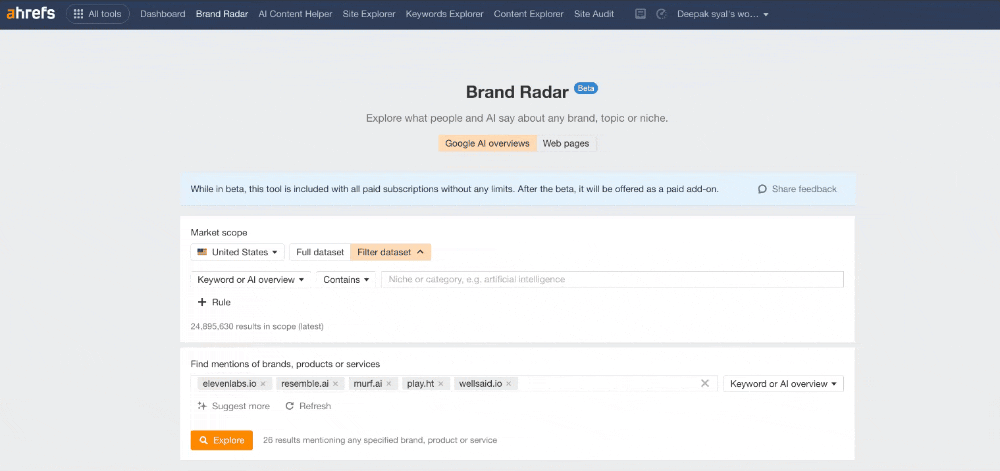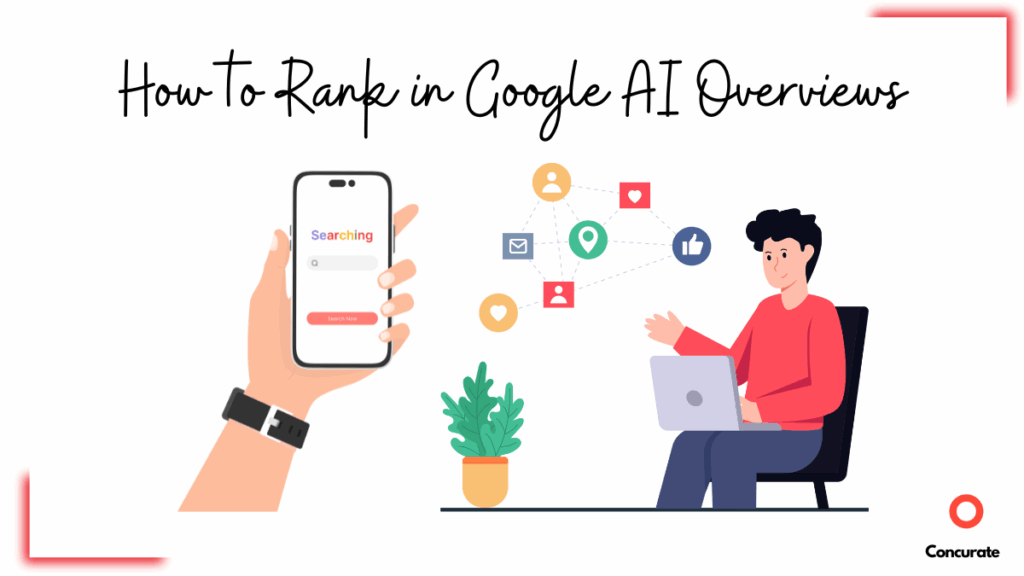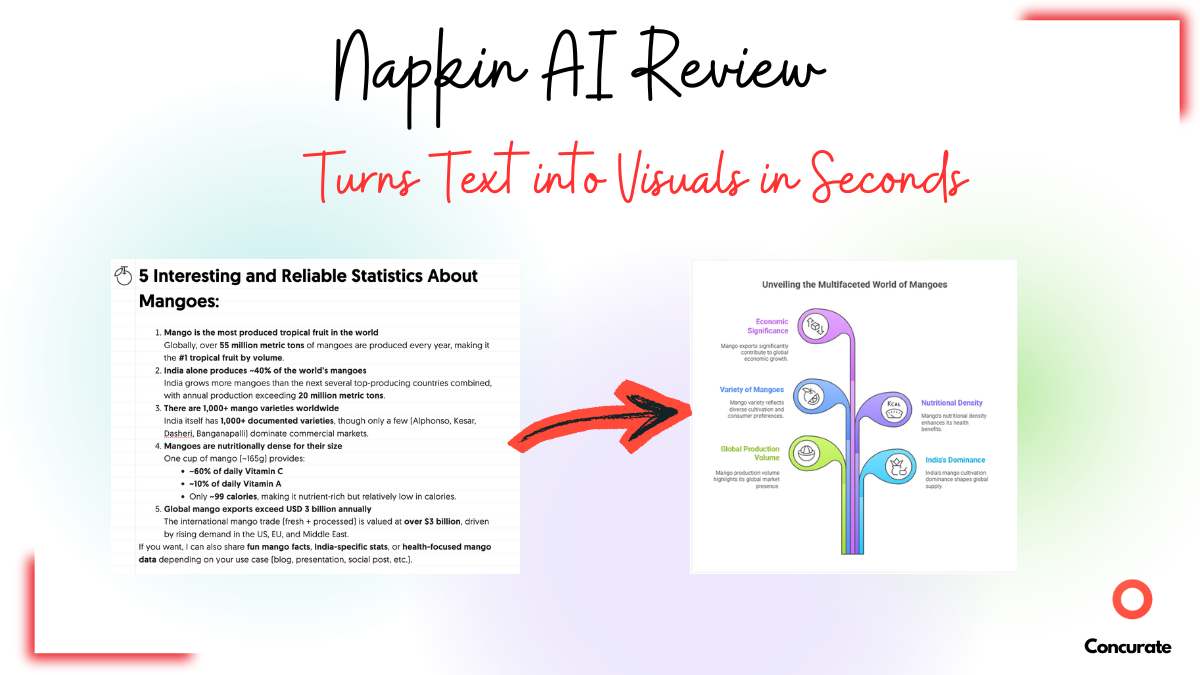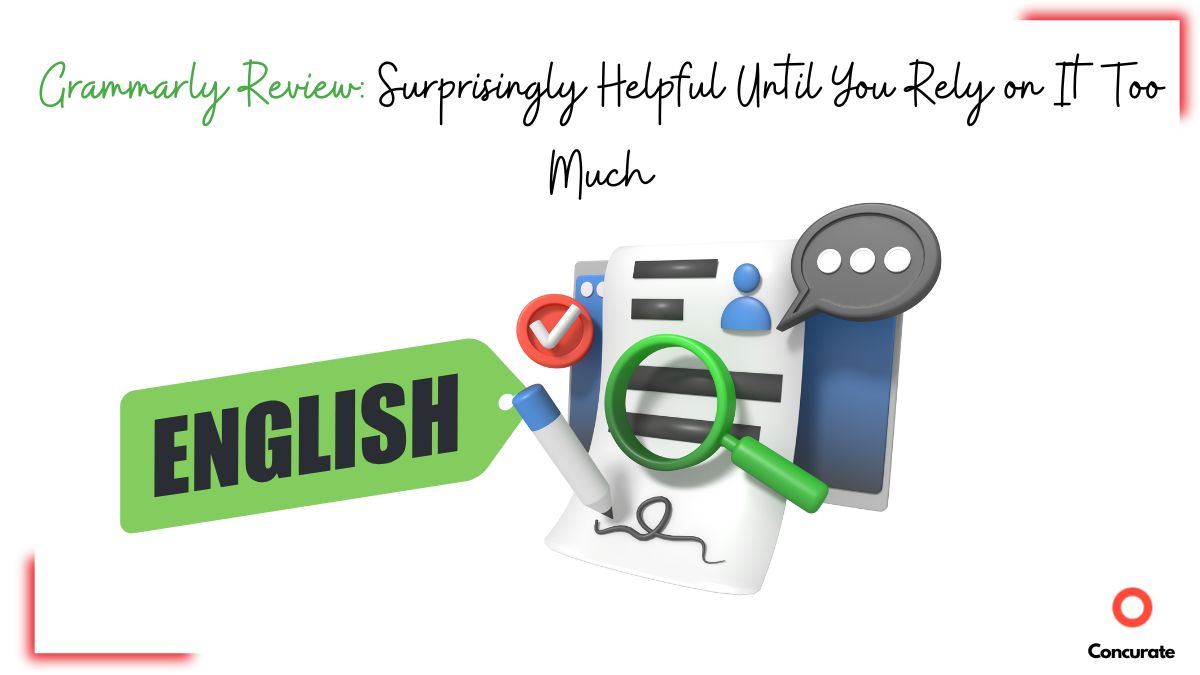How to Rank in Google AI Overviews: A Tactical Guide for SaaS Brands
Updated for 2025
| Overview: To rank in Google AI Overviews, target long-tail informational queries, update high-potential content smartly, match top AIO results using cosine similarity, build branded search authority, and embed YouTube videos to boost visibility. |
Getting found on Google is more challenging than ever. Even great SEO isn’t enough anymore.
One big reason? AI Overviews (AIO) now take up prime real estate on Google’s search results, pushing traditional organic listings lower.
However, Google still handles over 13.9 billion searches a day. And users want instant answers. They’re more likely to engage with AI Overviews rather than scroll through blue links.
For B2B SaaS brands, this changes everything. It’s time to focus on getting featured in Google AIO. If your product shows up there, you attract more traffic, build authority, and gain visibility exactly where it counts.
Now, the good news?
We have studied and tested how to rank in Google AI overviews, and today, we are sharing that goldmine with you.
But first, let us understand the
Anatomy of a Google AI Overview Result
To understand how to rank in Google AI overviews, let’s first understand the anatomy of a Google AIO result.
AIOs are usually short by design. We are talking 90 to 170 words. Each typically includes content from 5 to 8 sources pulled from the top-ranking organic search results (usually top 10 to 12).
Recommended Read: Google Ranking Drop: How We Pulled Conversions Driving Content Back to Page 1
When do they appear?
Though there is no fixed answer to this question, we noticed that AI Overviews are usually triggered by the following:
- Informational queries (e.g., how-to, what-is, best tools for…)
- Long-tail searches with clear context.
- Queries that also trigger featured snippets.
Google favors AIOs for searches where users want fast, actionable explanations.
What are the types of websites Google shows in AIO?
We have noticed that AI Overviews favor the following:
- Brand-owned blogs
- High-quality SaaS product pages and
- Expert-led how-to content
They are less likely to cite forums or community-driven sites, even if those rank in classic search. This is because AIO prefers authoritative pages, while classic search prefers community-driven platforms.
For example, the most visible domains in AI Overviews are youtube.com, wikipedia.com, linkedin.com, NIH, and support.google.com, whereas the top domains in classic search results are google.com, youtube.com, reddit.com, and quora.com.
Now that we understand the anatomy, it’s time to move from theory to action. Let’s dive into the pratical strategies!
How to Rank in Google AI Overviews: 5 Easy-to-Do Strategies
Based on everything we studied and tested, these five tricks consistently work best to trigger a Google AI Overview and get your content featured. This is how to rank in Google AI overviews.
Strategy 1: Target Long-Tail, Informational Searches (Not Just Keywords)
If you want your SaaS product to show up in Google’s AI Overviews, you need to create long-form articles that target informational, long-tail queries.
Think of “what are examples of intellectual property?” or “how to optimise patent prosecution strategy using art unit predictor.” These are informational searches where people are gathering basic information on intellectual property and patent prosecution.
Not to forget, some of these long-tail queries—those more specific searches—often signal high buying intent and are very easy to rank for.
For example, someone searching “best tools for payroll for small businesses” is likely looking to adopt a payroll solution for their organization and is actively comparing vendors to make an informed purchase decision.
To nail this strategy, you can
- Create content that answers specific questions in a clear and straightforward way.
- Write how-to guides, step-by-step articles, and problem-solving posts.
- Follow easy-to-skim structures with bullet points, subheadings, and short paragraphs.
- Always align your content with user intent (what the searcher really wants).
- Also include “People Also Ask” questions in your article. It shows Google that your content covers the topic deeply.
By doing these, we got many of our clients’ blogs featured in Google AI overviews. For instance, check the one shown below from Triangle IP.
Important to note:
Most content that appears in Google AI overviews don’t fully match the searcher’s intent. That’s why you have a great opportunity here if you create content that accurately answers the target informational query.
Strategy 2: Keep Your Content Fresh, Clear, and Updated (But Be Smart About It)
Google’s AI loves fresh and simple content. So, if your content is outdated or hard to read, it’s far less likely to be pulled into an AI Overview. Hence, publishing newer ideas and updating older content is a must (this also immensely helps with SEO).
For example, CrowdStrike keeps their pages updated with new threat reports and analyst mentions, which is why AI engines surface them reliably.
But there is a caveat.
Updating doesn’t mean you update everything all the time. That requires a lot of resources and barely generates any returns. What you need to do is “smartly” update.
So, how to rank in Google AI overviews using this strategy?
To go about this, focus on
- Articles that already rank decently but have dropped a little (re-optimize them for other keywords or intent).
- Posts that target topics that are still highly searched today.
- Turn complicated articles into listicles, step-by-step formats, or quick how-to guides.
- Simplify your language so even a 10th grader can understand it (use the HemingwayApp to analyze the simplicity of your text).
Check out how we used this strategy to increase the Google search ranking from Page 7 to Page 1 and also feature in Google AI Overviews.
Important to note:
Don’t waste time refreshing random old blogs. Analyze and update only where you can realistically win back rankings or AIO visibility. A few smart updates can enhance your rankings and AIO chances fairly.
Strategy 3: Use Cosine Similarity to Replicate AI Overviews Results
Cosine similarity is a simple concept. It measures how closely two pieces of text match in terms of meaning, structure, and wording, even if the words aren’t completely identical.
So why does this matter for ranking in AI Overviews?
Because it’s not enough to rank in the top 10 Google searches anymore. The closer your content is to Google AIO’s results, the more likely Google will pull from it.
This is where cosine similarity comes in (reverse-engineering, I like to call it).
Here’s how to rank in Google AI overviews using cosine similarity in 4 easy steps:
- Find the blog on your website that ranks best for a keyword.
- Look at the top page Google AIO is showing for that keyword.
- Use cosine similarity and compare the two articles on factors like writing style, tone, article structure, and content.
- Optimize or improve your page to match the Google AIO top result.
Example
For instance, for the long-tail query “best tools for creating onboarding documents,” Zapier’s blog ranks #1 and also appears at the top of Google AIO, as shown below.
On the other hand, the article by People Managing People targeting the same query ranks #2 but does not get pulled by Google AIO.
Now let’s apply cosine similarity to find out how closely this piece aligns with the structure and language patterns of Zapier’s article and how it can be improved to get featured in Google AI Overviews.
| Factor | Zapier’s blog | People Managing People’s blog | How to improve? |
| Language | Conversational and friendly. | Formal and descriptive. | Follow a conversational and relatable tone to keep the reader engaged. |
| Content Focus | Contains actionable, workflow-based, practical examples. | A broad tool list and generic evaluation criteria. | Add actionable steps, use-case breakdowns, and workflow templates. |
| User Experience (UX) | Scannable headers, internal linking, and mobile-friendly design. | Text-heavy, long lists, and less mobile-optimized. | Break content into sections, use summary boxes, and improve mobile rendering. |
To close the gap with Zapier’s blog, People Managing People should adopt a more conversational tone, focus on actionable and practical content, and enhance user experience through better structure and mobile optimization.
Using cosine similarity, we featured one of our pieces on content marketing agencies for legal tech companies in Google AI overviews. The image is attached below.
Important to note:
You’re not copying. You’re making your page the best possible answer in the format AI likes. Rewrite intros, break long paragraphs, and structure steps clearly if you want Google’s AI to pick your content.
Strategy 4: Grow Your Branded Search Visibility and Authority
Google’s AI Overviews don’t just pull content from anywhere. They prefer brands that users already trust. And a critical trust signal is branded search visibility.
In simple terms, if more people are searching for your SaaS brand name, Google sees you as a stronger authority. Conversely, if you’re barely mentioned or searched, you’re less likely to get pulled into an AIO.
So, how to rank in Google AI overviews using this strategy?
Here’s what you should do:
- Use tools like Advanced Web Ranking, Ahrefs, or SEMrush to track your brand citations and branded keyword searches.
- See if your brand is appearing for queries where you want to come across as an authority.
After analyzing these, grow your authority by
- publishing original data and insights,
- getting media mentions and guest posts through leadership features, or
- building strategic backlinks from trusted websites.
A great example of this is Grammarly.
Grammarly has a domain rating of 90, over 16M backlinks, 75K referring domains, and ranks for over 600 branded keywords. The company has established itself as a strong authority in the domain of the English language.
It appears in Google AIO for numerous long-tail, informational queries like “What is the difference between your and you’re,” as shown below.
Want to know how Grammarly established this domain authority and pulls over 27M organic traffic every month? Read it here in our Grammarly analysis.
Even RingCentral shows up so often in AI answers because they’ve built structured, answer-ready assets across product pages, trust hubs, and comparisons.
Important to note:
While branded search traffic is a huge positive signal for AI and classic search, it’s still possible to get featured in Google AI overview without it. The key is to create valuable content that answers informational queries (Strategy 1).
Strategy 5: Leverage YouTube Videos to Increase AIO Visibility
Have you noticed how YouTube videos have been flooding the first page of Google search results lately? That’s no accident.
Google knows videos help users understand information faster and retain it better. And now, AI Overviews are starting to cite videos directly, especially from YouTube (click here to check our Concurate’s YouTube channel).
If you’re not creating video content, maybe now is the right time.
Here’s how to get started with YouTube videos:
- Create short, clear, and engaging instructional videos about your SaaS products (maximum 1 minute in length).
- Create long, comprehensive videos on product demos, feature comparisons, how-tos, and problem solutions.
- Upload consistently to YouTube (at least 3 times a week).
- Embed these videos on your own blogs or resource pages to help readers understand your product better (hence, improve the chances of a sign-up or demo request).
For example, Datacipher, a leading provider of IT education and training services and one of our clients, embedded its YouTube video on Palo Alto Networks’ Prisma Access SASE Security into its blog, titled, Mastering SASE with Prisma Access Course: A Comprehensive Guide to the Palo Alto EDU-318 Course.
The video gives a quick, visual look at the EDU-318 course, which helps the readers grasp and retain the content of the course better, increasing the chances of them signing up for the course.
Important to note:
You don’t need high-end studio production. You can even shoot your videos on your latest iPhone. What you need is clear explanations + good audio + clean visuals. Start by repurposing your top 5 blog posts into short video explainers.
Bonus Tip: How to See If Your Brand Is Showing Up in Google AI Overviews?
Once you apply these strategies and start showing up in Google AI Overviews, you’ll naturally want to track your visibility. It is important to see how often your brand appears and how you stack up against competitors.
You can use Ahrefs’ Brand Radar tool to do just that.
The tool shows the impressions, competitive share, market reach, and other metrics for different entities (your brand and its competitors). You can see exactly how your SaaS is performing in Google AI Overviews compared to others in your space.
For example, here we’ve compared popular AI voice generation tools and generated a report showing their respective impressions, competitive share, and market reach in Google AI Overviews.

And if you want to check the traffic you are getting on your website from GenAI tools like ChatGPT, Gemini, Perplexity, and CoPilot, you can use Google Analytics and generate reports of the same. Get more details on AI visibility here.
Want Your Content Picked by Google AI Overviews? Let Concurate Make That Happen!
If your SaaS blog content isn’t showing up in Google AI Overviews, it’s leaving traffic, authority, and revenue on the table.
Let us help you change that. Book a free call today!
And if you want more of such insights delivered to your inbox (spam-free), subscribe to our newsletter here.
Disclaimer:
The data and insights presented in this report are based on third-party platforms and tools. The information may not reflect the most up-to-date metrics or precise figures. Use this as a reference and verify with primary sources where necessary.







